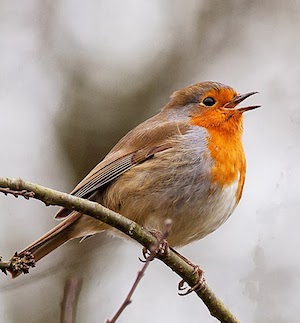County Donegal

Birding County Donegal
County Donegal is a county located in the west of the Province of Ulster, in the northwest of Ireland. It is one of three counties in the Province of Ulster that does not form part of Northern Ireland. It is the most northern county in all of Ireland, and is part of the Republic of Ireland. County Donegal is the second largest county in Ireland and the largest county in Ulster. The name ‘Donegal’ comes from the Irish, meaning ‘The Fort of the Foreigners’. Uniquely, Donegal shares a border with only one county in the Republic of Ireland, County Leitrim in north Connacht. The rest of its land border is shared with Northern Ireland (the Northern Irish counties of Londonderry, Tyrone and Fermanagh).Physically, the county is by far the most rugged and mountainous in Ulster. The county consists chiefly of low mountains, with a deeply indented coastline forming natural loughs, of which both Lough Swilly and Lough Foyle are the most notable. The famous mountains or Hills of Donegal consist of two major ranges, the Derryveagh Mountains in the north and the Bluestack Mountains in the south, with Mount Errigal at 749 metres the highest peak. The Slieve League cliffs are the second highest sea cliffs in Europe, while Donegal’s Malin Head is the most northerly point on the island of Ireland.
The climate is temperate and dominated by the Gulf Stream, with cool damp summers and mild wet winters. Two permanently inhabited islands, Arranmore and Tory Island lie off the coast, along with a large number of islands with only transient inhabitants. Ireland’s second longest river, the Erne, enters Donegal Bay near the town of Ballyshannon. The River Erne, along with other Donegal waterways, has been dammed to produce hydroelectric power. The River Foyle separates part of County Donegal from parts of both County Londonderry and County Tyrone.The climate is temperate and dominated by the Gulf Stream, with cool damp summers and mild wet winters. Two permanently inhabited islands, Arranmore and Tory Island lie off the coast, along with a large number of islands with only transient inhabitants. Ireland’s second longest river, the Erne, enters Donegal Bay near the town of Ballyshannon. The River Erne, along with other Donegal waterways, has been dammed to produce hydroelectric power. The River Foyle separates part of County Donegal from parts of both County Londonderry and County Tyrone.
-
Wikipedia
GNU Free Documentation License
http://en.wikipedia.org/wiki/County_Donegal
-
Ralph Sheppard
-
BirdWatch Ireland - Donegal
WebpageContacts, events etc...
-
IBA Donegal Bay
WebsiteSatellite ViewThis is one of the most important wintering sites in Ireland for Melanitta nigra (1,150 birds, 1996), which occur in nationally important numbers, together with Cygnus olor (109 birds, 1995), Clangula hyemalis (32 birds, 1996) and Mergus serrator (50 birds, 1996). The shores of Donegal Bay support nationally important numbers of Calidris alba (100 birds, 1996). -
NP Glenveagh
WebsiteSatellite ViewNatural woodlands of Oak and Birch clothe the slopes of the deep valley that bisects the Park. These woods are inhabited by Badgers, Foxes and Stoats, whilst woodland bird life includes Siskins, Treecreepers, Redstarts and Wood Warblers. On the uplands of the Park, birds more likely to be encountered include Ravens, Peregrines, Stonechat and Grouse… -
NR Sheskinmore Lough
WebpageSatellite ViewThe Sheskinmore Lough reserve is part of a large, shallow freshwater coastal lagoon set in wonderful machair (flat sandy) grasslands. It is rich in wild flowers, insects and birds. Our reserve is within a larger area owned and managed by the National Parks and Wildlife Service, and the whole area forms an extensive Special Protection Area and Special Area of Conservation. It is an important ecosystem which is renowned for its wintering Greenland White-fronted Geese, along with Choughs during the autumn and breeding Lapwings during the summer months. The site is also important for an array of declining species of plants and insects.
-
2019 [11 November] - Andy Hannaford
PDF ReportThe Rosses area of Donegal is somewhere that I have known for a long time having visited since I was a child and in more recent time was home for my parents. I have enjoyed exploring the area spending a great deal of time birdwatching, fishing, climbing and walking across this spectacular region. This year, after fifty-five years of visiting I meet another birder! This shows how quiet the area is.
-
Donegal Thatched Cottages
AccommodationAs sprays and pesticites become more widely used a disturbing feature is the side effect this has on bird life. In one generation the corncrake has become almost extinct and a number of other birds have been put on the protected list. Because West Donegal is free from intensive farming many of these protected birds have managed to survive quite well. Below we offer a brief description of a number of these protected and relatively rare birds which you can see at Donegal Thatched Cottages on Cruit Island. To help you identify them we suggest you bring a book on Irish birds. You will also, of course, see many other less rare birds, particularly various waders and dozens of shags perched on outlying rocks…
-
Peter Phillips - Tory Island Bird Blog
BLOGAccounts of birds and birding trips to Tory Island County Donegal…
